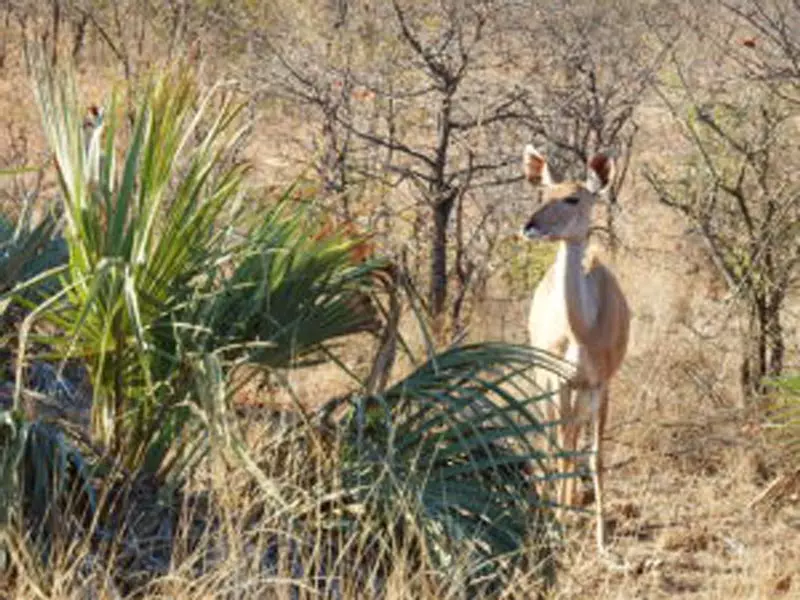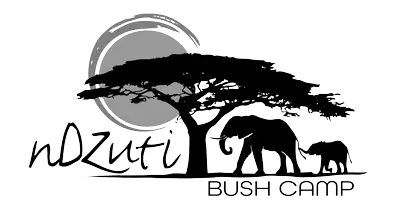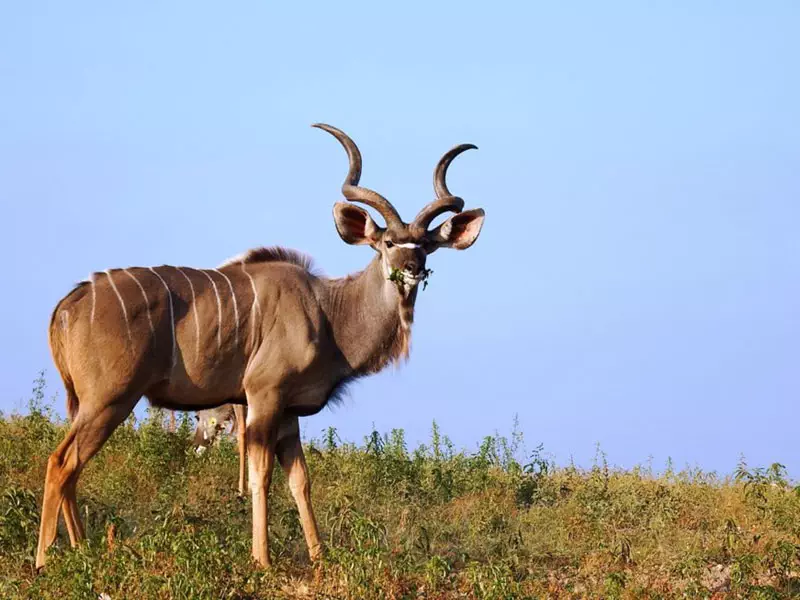Kudu bulls with their spiralled horns and attractive facial markings are breathtakingly beautiful. Kudu antelope do not have territories and perhaps, for this reason, they exhibit a marked sexual dimorphism. The males typically weigh a lot more than the female. Their corkscrew horns can attain two and a half spirals and are have a wide span. When the kudu lifts his mouth to feed off trees his horns fit perfectly over his broad back. Likewise, when a kudu bull runs through the thick bush of the Kruger Park he needs to lift his head to run under low branches and his horns fit down over his back. Kudu generally walk through the bush slowly and quietly placing the back foot in the track of the front foot- this track -on track gait is typical of the spiral-horned antelope tribe. Quiet movement through the bush allows kudu to hear any danger in the vicinity. Their large rounded ears are highly mobile and can swing around pointing towards the disturbance. The pink lining of the ear is a capillary rich skin that helps cool the animal, rather than sweating.

Kudu are not water-dependent, getting most of their need for moisture from what they eat. However, where water is available, they will drink often. Kudu eat leaves off trees and are required to put their face right into the tree canopy to find the preferred shoots and buds. Accordingly, their eyes are positioned far from the small mouth and on the sides of their face. The pointed face and small mouth allow kudu to be selective about what they eat.
Kudu calves are born in summer when the cow leaves the group to give birth alone. The calves remain hidden in thick bush for 2 months with the mother returning to suckle the calf just once a day! Such discipline ensures survival!

